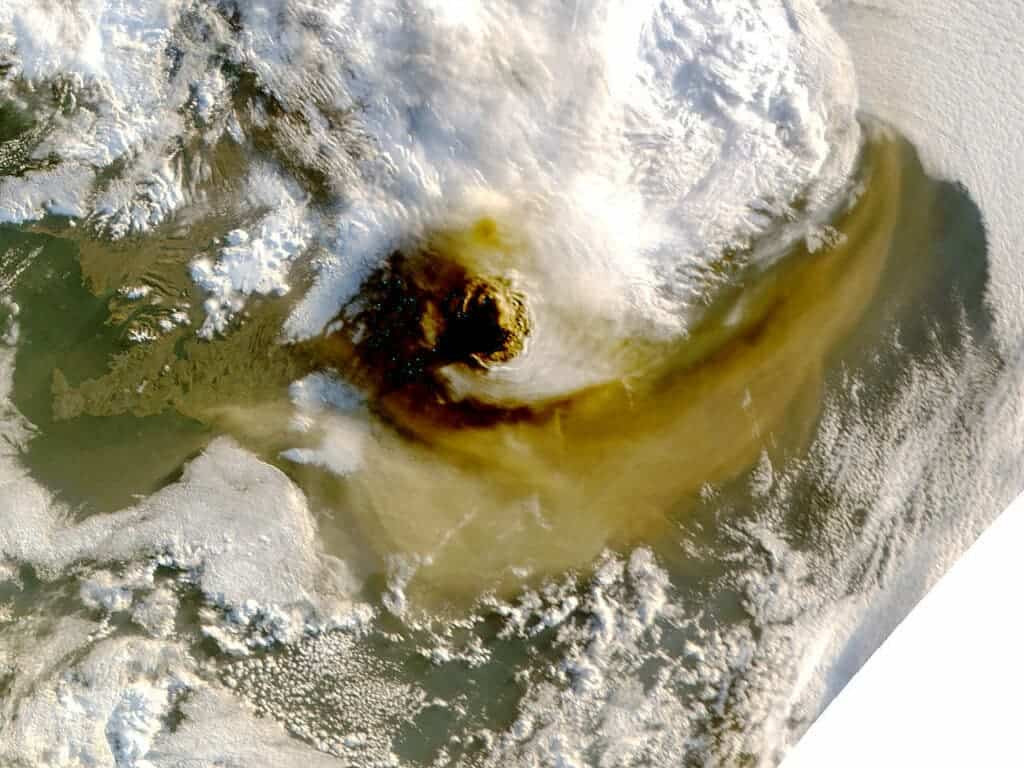The land of ice and fire is at it again, as one of Iceland’s ice-covered volcanoes starts to rumble.

Ice and fire rarely go hand in hand, but at Iceland’s Vatnajökull ice cap, Europe’s largest by volume, the two are inexorably intertwined. Vatnajökull covers several active volcanoes, including Grímsvötn — the most active of them all.
Grímsvötn erupts, on average, every 5-10 years. Eruptions melt through the ice cap and in addition to the eruption itself, this process can form massive quantities of liquid water, triggering floods and landslides.
“The lava melts the ice, it flashes into steam. There is a tremendous amount of energy being released in split seconds,” Ronni Grapenthin, a geophysicist at the University of Alaska, described to GlacierHub.
When Grímsvötn erupts, Iceland gets nervous. In 1783, Grímsvötn caused the infamous seven-month Laki fissure eruption, which triggered a famine that killed 20% of Iceland’s population and temporarily lowered temperatures across the entire Northern Hemisphere by around 1°C.
Nowadays, famine is less of a concern in Iceland, but these eruptions can still cause serious problems. In 2011, an eruption at Grímsvötn sent plumes of ash 12 km (7 mi) high into the air — the strongest eruption at the site in over 100 years. The eruption forced the cancellation of 900 flights which, while less disruptive than the 2010 Eyjafjallajökull eruption, was still considerable in its own right.

In late June 2020, the Icelandic Meteorological Office (IMO) reported that Grímsvötn is stirring once again. The IMO reported over 3,000 tremors around the volcano, three with a magnitude greater than 5, one of which was even felt in the country’s capital Reykjavik, 265 kilometers away. No major damage was reported, although several landslides and rockfalls were noted in the area.
However, according to scientists at the IMO, this could be indicative of an impending eruption. While geologists are fairly certain another eruption is coming relatively soon, forecasting it with accuracy is extremely challenging because every volcano is different, and even within the same volcano, eruptions are not identical. However, because Grímsvötn erupts so often (which is unusual for volcanoes), researchers are starting to see a pattern, and the current state of the volcano seems similar to those before the 2011 and 2004 eruptions.
Keeping an eye on the beast
Currently, an international team of researchers is carefully monitoring Grímsvötn using several geophysical methods. A high precision GPS network on the ground measures any ground movement in real-time. As magma flows from below, the ground expands outwards like a balloon, and GPS offers a good image of this process. The same process also brings gases from magma to the surface, and gas measurements are also being carried out at the site. Of course, earthquake monitoring is also being carried out remotely.
Another piece of information comes from a process called jökulhlaup –a violent outburst of water from the volcano. Because Grímsvötn is covered by a glacier, the volcanic caldera is filled with a subglacial lake — as the volcano rumbles, it melts water beneath the ice. Every once in a while, the volume of water exceeds the capacity of the caldera, pouring and flooding the surrounding areas.
These jökulhlaups can actually trigger the eruption since the volcano is very sensitive to pressure release from the removal of the water. If this phenomenon happens this summer, it is quite likely to precede an eruption — so researchers are also monitoring the subglacial lake in real-time.
The window for an eruption seems to be opening in the near future, but if an eruption does happen, researchers expect it to be pretty tame. Grímsvötn only has a massive eruption around once in 100 years, and given how big the one in 2011 one was, the next one is expected to be relatively small.
Still, when a volcano erupts under ice, there’s bound to be fireworks. For now, all we can do is wait, monitor, and be prepared.






